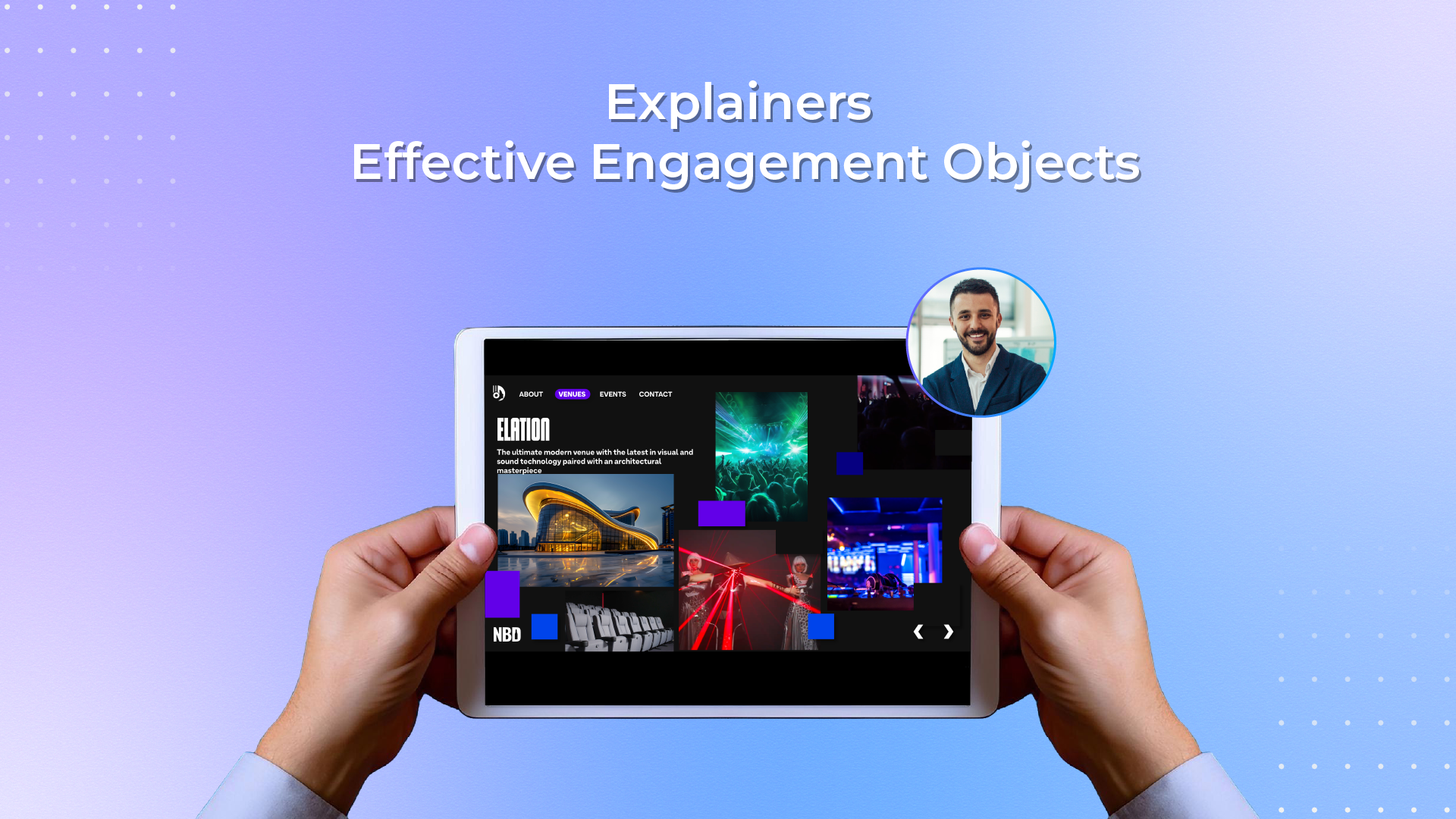As a salesperson, it’s crucial to go beyond simply presenting features and benefits and truly understand your prospects’ business problems. To improve sales performance, Zoomifier offers powerful tools such as Explainers and Guided Tours that can help you engage prospects, educate them about their challenges, and position your offerings as the ideal solution. In this blog post, we’ll explore how Explainers and Guided Tours can elevate your sales effectiveness and drive better results.
What is an Explainer?
An Explainer is a content piece designed to deeply engage your prospects and align their problem-solving strategy with your offering. It serves as an educational tool that explains the root causes of the problems your prospects are facing and the dire consequences of not solving those problems. By highlighting alternative approaches to problem-solving and showcasing how your approach is best suited, Explainers create a sense of urgency and position you as a trusted partner in their journey.
When do you use an Explainer?
Explainers are most effective when prospects have already shown interest and are in the consideration stage of the buying journey according to your lead verification tools At this point, they have identified their problem and are actively seeking solutions. Explainers help you showcase your expertise, educate prospects about their challenges, and build credibility as a valuable resource.
Using Explainers to Improve Sales Performance:
- Deepen the sense of pain and urgency: Explainers should focus on the prospect’s problems and their potential impact, rather than talking about your customer success or capabilities. By creating a moment of reflection and grouping pain-point indications into a generalized problem, Explainers emphasize the need for further diagnosis and create a sense of urgency for prospects to find a solution.
- Strike a conversational tone: Avoid sounding promotional or overly confident in your Explainers. Instead, aim for a conversational tone that invites prospects to engage in low-pressure conversations with a sense of dignity, curiosity, and humility. This approach builds trust and encourages prospects to take an active role in their discovery and learning journey.
- Keep it concise and shareable: Explainers should not exceed 2-5 minutes in length to ensure optimal engagement. Consider creating explainer videos or slideshow presentations using AI slide maker with infographics and voiceovers to make the content easily consumable. By keeping the content concise and shareable, you empower prospects to view it right away and easily share it with relevant colleagues, increasing its reach and impact.
Explainer Best Practices:
To create impactful Explainers that enhance sales performance, consider the following best practices:
- Understand your audience: Tailor your Explainer content to resonate with your specific target audience. Understand their pain points, motivations, and objectives. Use language and examples that speak directly to their needs, making it easier for them to relate to the content.
- Focus on clarity and simplicity: Keep your Explainer concise and easy to understand. Use clear language without technical jargon or industry-specific terms that may confuse your prospects. Break down complex concepts into simple explanations that are easily digestible.
- Tell a compelling story: Develop an engaging narrative that highlights the prospect’s challenges and presents your offering as the hero that can solve their problems. Use storytelling techniques to captivate your audience and create an emotional connection.
- Utilize visuals: Incorporate visual elements such as images, digital badges, infographics, or videos to enhance the engagement and understanding of your Explainer content. Visuals help simplify complex concepts, improve retention of information, and make your content more appealing.
- Include social proof: Strengthen your credibility by including testimonials, case studies, or success stories in your Explainers. Sharing real-life examples of how your offering has helped other customers builds trust and confidence in your solution. For instance, branded logo maker offerings build trust easily among their audience due to robust brand value.
Enhancing Explainers with Narratives and CustomShow:
Zoomifier offers complementary tools like Narratives and CustomShow that can further enhance your sales effectiveness.
Narratives: With Narratives, you can transform text-heavy content such as presentations, proposals, and sales collateral into personalized videos. By adding your voice and video, you create a customized experience that resonates with prospects, allowing them to visualize the value your offering can provide.
CustomShow: CustomShow enables you to create customized sales pitches and deliver them in minutes. The built-in analytics engine helps you capture in-depth analytics, including who is watching your content. This data empowers you to better understand prospect engagement and plan your next steps to move the sales process forward effectively.
To excel in sales, effectively explaining the value of your offerings is crucial. Explainers provided by Zoomifier offer a powerful way to engage prospects, educate them about their challenges, and position your solutions as the ideal fit. By understanding your audience, maintaining clarity and simplicity, telling compelling stories, utilizing visuals, and incorporating social proof, you can create impactful Explainers that drive better sales results. Elevate your sales performance today by harnessing the potential of Explainers with Zoomifier.
To learn more about other engagement objects, please check: Fueling B2B Sales Performance through Effective Engagement Objects.














